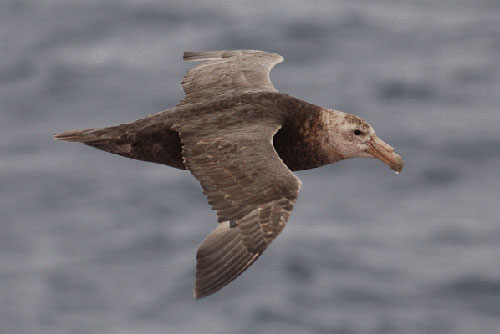Martin Sander (Universidade do Vale do Rio dos Sinos, São Leopoldo, Brazil) and colleagues have studied the movements of Southern Giant Petrels Macronectes giganteus as revealed following the banding of large numbers of chicks at breeding localities on islands along the Antarctic Peninsula.
The paper's abstract from the open-access journal Marine Ornithology follows:
"The Southern Giant Petrel Macronectes giganteus is circum-Antarctic in distribution, with breeding colonies found on sub-Antarctic islands and along the Antarctic continent. The objective of this study was to contribute to the body of knowledge regarding the post-fledging dispersal of this species outside of Antarctica through the analysis of band recovery data for chicks banded at eight different locations between latitudes 61°S and 68°S, and longitudes 55°W and 69°W. This project was carried out by the Antarctic Project UNISINOS (Aves Marinhas e Continentais da Antártica da Universidade do Vale do Rio dos Sinos [Marine and Continental Birds of Antarctica-University of Vale do Rio dos Sinos]), from 1983/84 to 1992/93. During this 10-year period, 7 503 chicks were banded, from which 68 recoveries outside Antarctica were reported, constituting the largest banding effort and recovery dataset used to examine Southern Giant Petrel post-fledging dispersal to date. The study presents information regarding these recoveries, with special attention to distance traveled from nest site, lapse of time between the banding period and recovery, direction and orientation of dispersal, condition of the birds when recovered and historical comparative analysis from the literature."

Reference:
SANDER, M., GARCIA, S.A., CARNEIRO, A.P.B., CRISTOFOLI, S.I. & POLITO, M.J. 2010. Band recoveries and juvenile dispersal of Southern Giant Petrels Macronectes giganteus marked as chicks in Antarctica by the Brazilian Antarctic Program (1984-1993). Marine Ornithology 38: 119-124.
Click here for a related publication on Southern Giant Petrel dispersal from the Antarctic Peninsula not referenced in the above study.
John Cooper, ACAP Information Officer, 17 March 2011

 English
English  Français
Français  Español
Español